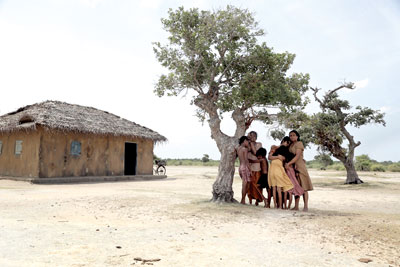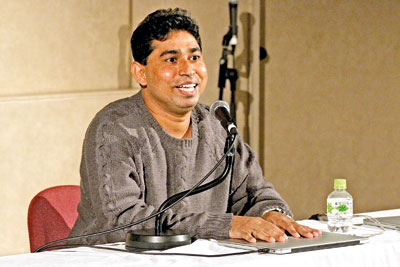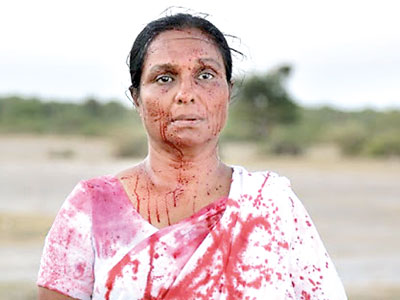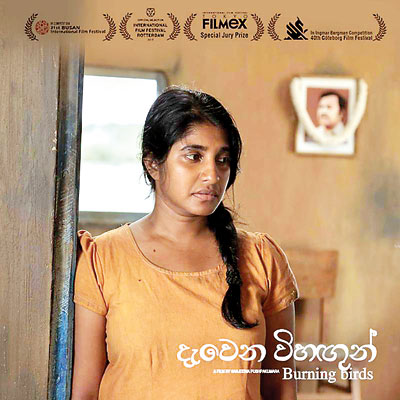‘My main aim was to share the stories I knew with the world’
Sanjeewa Pushpakumara is a prominent Sri Lankan film director, who directed much acclaimed and awarded movies like “Flying Fish” and “Burning Birds”. After completing a Masters Degree in mass communications, he studied filmmaking in Chuang – Ang University in South Korea. Sanjeewa Pushpakumara made three short films before directing two full length features. We speak with him about Sri Lankan and world cinema, his influences, career, awards and his future endeavours.
From a Masters Degree in Mass Communications to filmmaking, can you elaborate on this journey?
During my school days, I always dreamt of being a TV presenter. That is the only reason why I came to Colombo, the capital city of Sri Lanka from my home town.
After arrived in Colombo, I began to work as a TV presenter. Later on, I became script writer and TV producer as well. However, I wasn’t successful and also not pleased with what I was doing. I decided to be a filmmaker after I watched “This Is My Moon” by Asoka Handagam, “Death on a Full Moon”, “Walls Within” by Prasanna Vitanage. Mainly these 3 contemporary Sri Lankan films made a huge impact on me.
How did your filmmaking affected with your birth and the childhood in war affected easter province?
I was born and grew up in very remote village, in Trincomalee district, in Eastern Province. When I was 5, the Tamil Tigers killed my school principal and his wife along with other villagers. Since that on several occasions we had to stop our schooling. Not only that, I have spent my childhood in refugee camps as well. When I decided to be a filmmaker, my main intention was to share those stories I knew with the world. As a filmmaker, I cannot live without telling these stories.
You made three short films before making any full length feature, “Touch”, “Wings to Fly” and “An Encounter in the Woods”. What were those about? Could you please tell us a bit about them?
“Touch” is about an army soldier who has lost both his arms. The film discusses how important touch is for people to live. I made “Wings to Fly” in Korea, during one of the film workshops which I underwent in 2007. The film is about a young and beautiful blind girl and her military boyfriend. “An Encounter in the Woods” is a short film we made during our workshop of Asian Film Academy of Busan Film Festival. I worked as the production designer.
What inspired you to shoot “Burning Birds”?
In 1989, when we lost our father, I was just 11 years old. That time I had 4 brothers and 3 sisters. I am the eldest child of the family. My mother was just 37 years.
This is the first inspiration. Year 1989 is not only important for my family, it is very important year for Sri Lanka history too. The second Marxist insurrection from the Southern part of the country was intensely taking place in 1989. Unfortunately, government defeated this struggle the same year, killing more than 60,000 young people. One inspiration for “Burning Birds” came from my own experience. Then the other one was what my country went through.

Sanjeewa Pushpakumara
You have mostly used long-shots in the movie. What was the idea behind that?
I wanted to give a meditative and realistic style to the narrative. Therefore, I was very careful not to create a drama with the quick camera movement. Always tried to make audience to observe the narrative. Human figures and their relationship with space was also a very important fact I considered.
The film contains some very hard scenes, particularly regarding rape. Why did you decide to include them?
Those scenes are an integrated part of the narrative form. Through these scenes, we can see how strong is the narrative evolution. These scenes signify how brutal and cruel our human behaviours are.
Anoma Janadari and Samanalee Fonseka give impressive performances in the film. Can you tell us about the casting process and the way you guided them through the movie? In general, what do you look for in the actors you are casting?
Anoma Janadaree was mainly in Asoka Handaga’s films. However, she didn’t have a chance to act in films for 12 years. I do not know the reason for that. Since we only have a few resources in Sri Lanka I decided to work with Janadaree. The biggest challenge working with Janadaree was balancing her physical act with the mental turmoil her character undergoes. I had many discussions with her. I kept insisting for her to be restrained in her performance.
Samanalee Fonskea is very good young actress. I think she is a good asset to Sri Lanka cinema.
I carefully directed them. Some times, I took more than 40 takes just for one shot. I strongly insist them to be Kusum and Wasana, not themselves.
Which are your most important influences as a filmmaker? Anyone from Sri Lanka?
Ingmar Berman, AndreI Tarkovsky and Robert Bresson, Yasujiro Ozu, and Micelangelo Antonioni are always my gretest influences. Filmakers like Carl Dreyer and Hou Hsiao Hsien I also admire very much. From Sri Lanka, I highly respect the work of Lester James Peries, Prasanna Vitange and Asoka Handgama.
By Sankha Ray

Anoma Janadaree

Samanalee Fonseka


